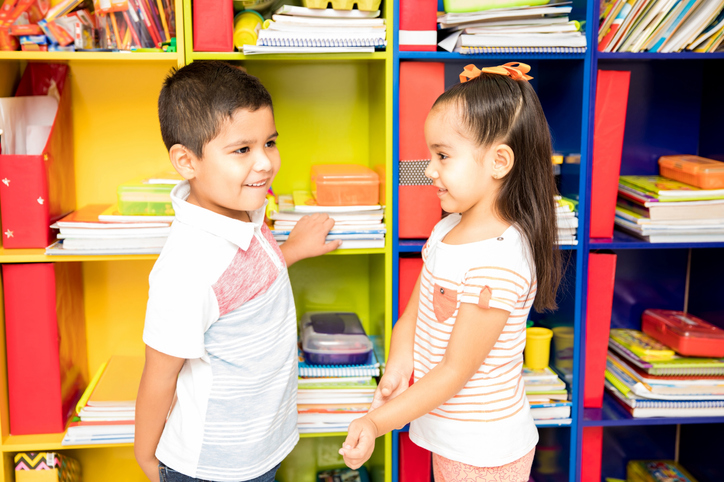

The Children’s Equity Project and the Bipartisan Policy Center have come together to create an actionable policy roadmap for states and the federal government—as well as for candidates at all levels of government vying for office—to take meaningful steps to remedy these inequities in early learning and education systems. The report, “Start with Equity: From the Early Years to to Early Grades Data, Research, and an Actionable Child Equity Policy Agenda” aims to close opportunity gaps in learning systems.
The report identified three key policy areas that strongly influence children’s experiences in the classroom and disproportionately disadvantage children of color and children with disabilities. They include:
• Harsh discipline and its disproportionate application
• The segregation of children with disabilities in learning settings
• The inequitable access to bilingual learning opportunities for dual language and English learners
The report also discussed the following findings in regards to DLL and EL Students in Particular:
- Dual language learners (DLL) and English learners (EL) are a large, diverse, and growing population.It is estimated that about a third of children in the country under eight are DLLs1, though gaps in data prevent a more precise estimate.
- As a subgroup, DLL and EL children have a host of linguistic, cultural, and social strengths. Their bilingualism is associated with cognitive advantages, including strong executive functioning skills, attention, perspective taking, and self-regulation.
- Dual language immersion models are associated with improved developmental, linguistic, and academic outcomes for all students. Such models present academic content in two languages in settings in which, ideally, the enrollment is roughly balanced between native speakers of each of the languages used. Research shows that having access to learning experiences in a child’s home language alongside English strengthens the language foundation upon which literacy grows, provides meaningful access to the curriculum, and can foster better teacher-child relationships.
- Despite the advantages of bilingualism and the superiority of high-quality bilingual learning models, our learning systems are overwhelmingly depriving DLLs and ELs of such opportunities.
- There is a lack of bilingual learning programs nationwide. In some places where bilingual learning programs do exist, DLLs and ELs are underrepresented; in other places, they are explicitly locked out as a matter of policy.
- English immersion or “English-only” programs are commonplace for DLLs and ELs, but they are not effective. In K-12 settings, these models sometimes result in the segregation of students learning English. Research shows DLLs who are first exposed to English in kindergarten and remain in English-dominant instructional environments tend to fall behind their early-proficient and monolingual English-speaking peers on academic skills (as measured in English).
- This has contributed to a gap between DLLs’ and ELs’ potential and their outcomes. Beyond a lack of access to appropriate learning approaches, this gap is likely tied to a societal bias in the United States in favor of English monolingualism. Assessments are primarily conducted in English, and while bilingualism is valued for some—often higher income, native English speakers—it is seen as a deficit for DLLs and ELs.
- These factors not only compound to disadvantage children, they also give a misguided perception of the capabilities of DLLs and ELs.
- For DLLs, bilingual learning is not an optional enrichment, as it is for children who speak English as a first language. It can make or break their access to a quality education altogether. It is the difference between enrichment and equity.
- Assessment problems cannot be overlooked. In addition to improving access to high-quality bilingual learning models, we need better assessments for DLLs and ELs so we can effectively measure both student progress and program effectiveness. Too often, assessments are conducted in English, which end up assessing a child’s English skills rather than subject matter content. Although the field is lacking assessment tools in a diverse array of languages spoken by children in this country, there are tools in Spanish—by far the most commonly spoken language by DLLs and ELs in this country—that are not being used enough. Other obstacles to success are also significant. One problem that limits access to strong bilingual programs is the shortage of bilingual teachers nationally with the appropriate credentials.
- In addition, research finds that teacher bias and differential expectations for DLLs and ELs also impacts the success of young learners. Nationally representative data show that teachers have lower academic expectations for children classified as ELs; this is not the case in bilingual schools.
- Similarly, in countries that place value on speaking multiple languages, the academic differences between monolingual and bilingual students are small or nonexistent.
View the full report here.







